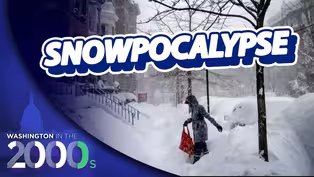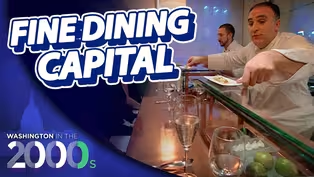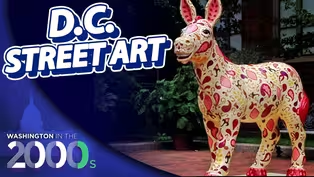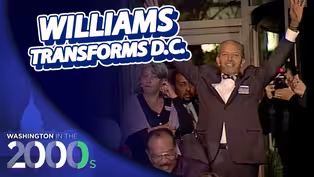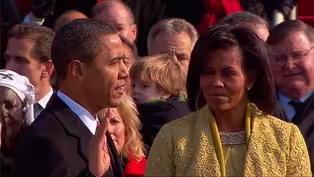Washington in the 2000s
The Party Animals and Borf Leave Their Mark on DC Streets
Clip | 2m 2sVideo has Closed Captions
In the 2000s, political statues and graffiti by Borf left their mark on D.C. streets.
In the early 2000s, D.C. experienced a vibrant and lighthearted transformation as colorful statues of elephants and donkeys, symbolizing democracy, adorned the streets, bringing joy and fostering conversations about art and democracy. Meanwhile, mysterious street art emerged, attributed to an enigmatic figure known as Borf.
Problems playing video? | Closed Captioning Feedback
Problems playing video? | Closed Captioning Feedback
Washington in the 2000s is a local public television program presented by WETA
Washington in the 2000s
The Party Animals and Borf Leave Their Mark on DC Streets
Clip | 2m 2sVideo has Closed Captions
In the early 2000s, D.C. experienced a vibrant and lighthearted transformation as colorful statues of elephants and donkeys, symbolizing democracy, adorned the streets, bringing joy and fostering conversations about art and democracy. Meanwhile, mysterious street art emerged, attributed to an enigmatic figure known as Borf.
Problems playing video? | Closed Captioning Feedback
How to Watch Washington in the 2000s
Washington in the 2000s is available to stream on pbs.org and the free PBS App, available on iPhone, Apple TV, Android TV, Android smartphones, Amazon Fire TV, Amazon Fire Tablet, Roku, Samsung Smart TV, and Vizio.
♪ ♪ NARRATOR: In 2002, a colorful stampede overran the city.
ANDREA: We had gone through such a dark period, and it was a chance to have some fun, talk about democracy, and art all at the same time.
Elephants, donkeys, paint them anyway you want but, you know, something uplifting.
There were 200 of these all around the city, and they just put a smile on your face because you'd be driving down a street, and then all of a sudden, there it is.
ROXANNE: It was fun, but I don't think it galvanized and united the city, but there's always that question about art, how do you generate it?
What's authentic?
NARRATOR: In 2004, more mysterious artwork began to crop up around the city.
AMANDA: Borf was a street artist that was tagging all around the city on street overpasses, on sides of buildings.
DAN: Who is this jerk tagging every single mailbox and wall with Borf, and like, what the hell is Borf?
AMANDA: Nobody in the art scene knew.
Nobody anywhere knew who Borf was.
NARRATOR: Police eventually caught Borf red-handed.
The culprit?
An 18-year-old art student.
AMANDA: He was very sort of anti-capitalism, and the Borf itself was the nickname of a friend of his who had died in high school.
He had a message, and he was putting it out there.
You know, frankly, it was kind of cool.
NARRATOR: For more clips and to watch the full program visit weta.org/decades.
When 'Snowpocalypse' and 'Snowmageddon' Rocked DC
Video has Closed Captions
Clip | 1m 55s | Snowpocalypse and Snowmageddon blanketed the D.C. region with over three feet of snow. (1m 55s)
When DC Became a Fine Dining Capital Courtesy of José Andrés
Video has Closed Captions
Clip | 1m 57s | Chef José Andrés helped turn Washington into a dynamic food town. (1m 57s)
When a Baby Panda at the National Zoo Captured DC Hearts
Video has Closed Captions
Clip | 2m 31s | Witness the heartwarming arrival of a baby panda to the National Zoo. (2m 31s)
The Party Animals and Borf Leave Their Mark on DC Streets
Video has Closed Captions
Clip | 2m 2s | In the 2000s, political statues and graffiti by Borf left their mark on D.C. streets. (2m 2s)
Mayor Tony Williams Survives a Scandal and Gentrifies D.C.
Video has Closed Captions
Clip | 3m 7s | In 2004, DC Mayor Tony Williams' re-election campaign hit a snag. (3m 7s)
Preview: Washington in the 2000s
Preview: Special | 30s | WETA revisits the people and events that shaped Washington in the new millennium. (30s)
Providing Support for PBS.org
Learn Moreabout PBS online sponsorshipSupport for PBS provided by:
Washington in the 2000s is a local public television program presented by WETA
